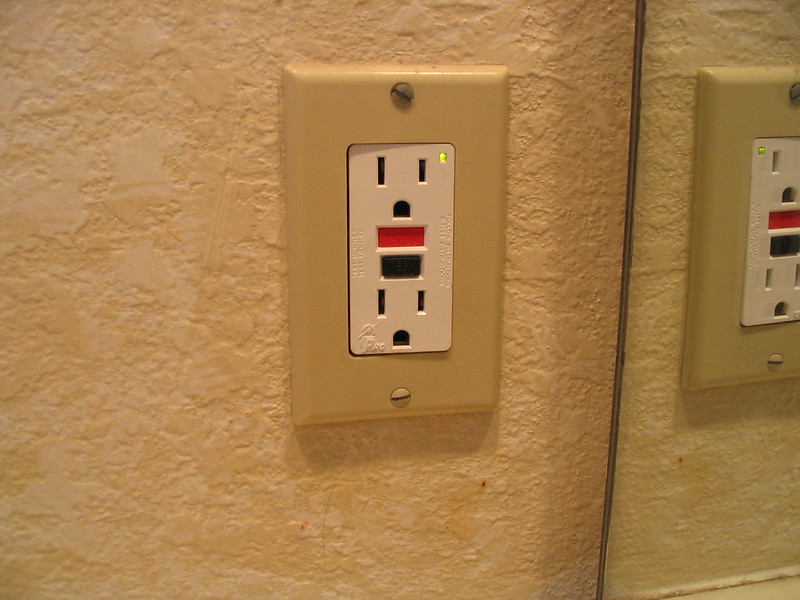
If your GFI outlet keeps tripping, check for loose connections or damaged parts. Use a multimeter to test electrical flow irregularities or unplug appliances causing the tripping. Moisture exposure can also trigger these issues. Reset the outlet by firmly pressing the reset button after ensuring it’s dry. Test it with a small appliance afterward. Regularly test GFI outlets by pressing the ‘Test’ button monthly. Consider replacement if it frequently trips, ensuring power is off before replacement. Follow manufacturer’s guidelines for installation and testing. These quick fixes help maintain electrical safety and functionality.
Understanding GFI Outlets
Do you know how GFI outlets work to protect against electrical hazards in your home? Ground Fault Circuit Interrupter (GFI) outlets are designed to monitor the flow of electricity and quickly shut off power if they detect any imbalances. This is crucial in preventing electric shocks and fires, especially in areas prone to moisture like kitchens, bathrooms, and outdoor spaces.
Inside a GFI outlet, there is a built-in sensor that continuously compares the outgoing current with the incoming current. If even a small difference is detected, as low as 5 milliamps, the GFI outlet will trip, cutting off the power supply almost instantly. This sensitivity is what makes GFI outlets so effective in safeguarding against electrical accidents.
When a GFI outlet trips, it must be manually reset by pressing the reset button on the outlet. It’s essential to test GFI outlets regularly to ensure they are functioning correctly. If you encounter frequent tripping or other issues, it may indicate a problem that requires professional attention to maintain the safety of your electrical system.
Identifying GFI Issues
Identifying potential GFI issues involves conducting thorough visual inspections and testing for any irregularities in electrical flow. Start by visually examining the GFI outlet for any signs of damage, discoloration, or loose connections. Additionally, check for any nearby appliances or devices that may be causing the GFI to trip. Use a multimeter to test the outlet for proper voltage and ensure that the wiring is correctly installed. If the GFI outlet is not providing power or keeps tripping, it could indicate a fault in the wiring, a ground fault, or a malfunctioning GFI outlet. In some cases, moisture or water exposure may also be causing the GFI to trip. It is crucial to identify the root cause of the issue to prevent any electrical hazards or malfunctions. If you are unsure about how to proceed or if the issue persists, it is recommended to seek professional help to diagnose and resolve the problem effectively.
Resetting a Tripped GFI Outlet
To reset a tripped GFI outlet, first locate the reset button on the outlet and press it firmly until you hear a click. This button is typically red or black and is labeled “reset.” If the outlet has tripped due to a ground fault, pressing the reset button should restore power to the outlet. It’s essential to ensure that the outlet is completely dry before attempting to reset it to avoid any safety hazards. Before pressing the reset button, unplug any devices connected to the outlet to prevent damage to them. Once you’ve reset the GFI outlet, plug in a small appliance or device to test if it’s functioning correctly. If the outlet trips again immediately, there may be an underlying issue with the wiring or the connected devices. In such cases, it’s advisable to consult a qualified electrician to diagnose and resolve the problem effectively.
Testing GFI Outlets Regularly
Regularly testing GFI outlets is a crucial part of ensuring the safety and functionality of your electrical system. To test your GFI outlet, start by pressing the “Test” button on the outlet. This should cause the “Reset” button to pop out, indicating that the GFI has tripped successfully. Then, plug in a lamp or a small appliance into the outlet and turn it on. Press the “Reset” button, and the appliance should turn back on. If it doesn’t, there might be an issue with the GFI outlet or the wiring connected to it.
It is recommended to test your GFI outlets at least once a month to make sure they are working correctly. Additionally, test them after any major electrical storm or if they have not been used for an extended period. Regular testing can help you identify potential problems early on and prevent electrical hazards in your home.
When to Replace a Faulty GFI Outlet
If you notice that your GFI outlet is repeatedly tripping, it may be time to consider replacing it to ensure the safety of your electrical system. GFI outlets are designed to protect you from electrical shocks by quickly cutting off power when they detect a ground fault. However, if your GFI outlet is tripping frequently, it could indicate an underlying issue that needs attention.
Before replacing the GFI outlet, make sure to troubleshoot the problem. Check for any water exposure, loose connections, or faulty appliances that could be causing the frequent tripping. If the outlet continues to trip even after troubleshooting, it’s best to replace it promptly.
When replacing a faulty GFI outlet, always turn off the power at the circuit breaker to avoid any electrical hazards. Remove the old outlet carefully, noting the wire connections, and install the new outlet following the manufacturer’s instructions. Once installed, test the new GFI outlet to ensure it is working correctly and providing the necessary protection for your electrical system.







